Today, there is a huge number types of guitar strings, they are made from a huge amount of materials. That's why when choosing strings Even an experienced guitarist often gets confused.
So let's start with the basic questions:
What exactly are they made of?
String material
Metal strings are very common in the guitar world. Let's look at them first.
Stainless-Steel: stainless or noble steel. These strings have excellent strength. They are also more resistant to corrosion (rust), as their name suggests. The magnetic properties of stainless steel provide bright string tone with enhanced midrange. Of course, they are very hard, which especially affects when playing with bends and tapping.
Gold: gold. One of the most expensive metals of mankind has found its application here too. You will buy such strings at a “slightly” inflated price, however, they will be distinguished by increased strength and excellent sound brightness. This type strings will be very interesting for all lovers of this material.
Nickel/Nickel-Steel: Nickel/Nickel-Steel. The majority of all strings are made from either nickel, or from nickel and steel alloy. Pure nickel strings, due to their magnetic properties, are somewhat quieter than nickel-steel alloy strings, which have a much stronger effect on the magnetic field of the pickups.
Bronze strings. Most often such strings can be found. Not suitable for electric guitars due to their magnetic properties. They have a bright and fairly clear sound.
Copper strings. These strings are cheaper than bronze or silver strings, but have a less bright sound in comparison. Used on acoustic guitars.
Coated strings. Thanks to technical progress and nanotechnology, we will be able in the near future to obtain much higher quality and cheaper strings coated with nanomaterial. This coating will provide reduced noise when strings are pressed, excellent string sound and strength.
Why do strings from the same set look different?
First of all, due to the fact that the vibration frequency of strings of different thicknesses is different, and, accordingly, these strings produce a sound that is different from each other (for example, frequent vibrations of the strings produce a high-pitched sound). The braid on bass strings is designed to produce low frequency vibrations.
Winding strings
There are the following types of guitar bass string windings:
Roundwound (round winding). These strings are wrapped with unpolished round steel wire and provide a very rich overtone (overtones are high-frequency sounds) sound.
Halfwound (semi-flat winding). The winding of these strings is polished. This helps reduce noise (reduce “squealing”) when you move your hand across the fretboard. The sound of these strings is quite rich and lively.
Flatwound (flatwound strings). Very smooth polished strings. Thanks to this, dirt practically does not accumulate on their surface. These strings have almost no sound when you move your hand across the fingerboard, however, they have a duller and poorer sound.
Articles on the topic of strings will definitely be continued in the near future.
Good luck to you in mastering the guitar and all the best!
Note to the non-professional guitarist. (and for public education purposes)The choice of strings is a purely individual matter and it is impossible to say unambiguously which strings to choose; this also applies to instruments. Demanding musicians sometimes spend years selecting strings for themselves, sometimes one at a time from different sets. Even if they finally find it, then, lo and behold, the string manufacturers will come up with something new, and the search begins again. A good musician, as a creative person, will always look for better and better strings, but for a beginning guitarist, when choosing strings, it is important to decide on the main thing; what kind of music and what kind of guitar he will play, then the choice of strings will not be such a painful problem.
First, a little about what strings are. In fact, a string can be any thread or wire, as long as it does not break or be stretched under the influence of the player. Once upon a time, when there were no guitars or violins, our distant ancestors played on sinew (made from animal intestines) and silk strings that did not have a winding. Gut strings have survived to this day, but for a number of reasons they now remain almost only on harps and are sometimes found on violins (mainly when performing authentic music). Only in the 19th century did metal (copper, silver) windings appear on gut strings, which made it possible to improve the timbre of bass strings while simultaneously reducing their tension, which made the performer’s life easier and enriched the timbre of his instrument. At the same time, with the advent of the grand piano, the first experiments in the production of steel-based strings appeared, which later found application for other instruments. The 20th century extremely expanded the range of types of strings, adding many new ones to the existing ones: synthetic, on a steel cable, multilayer, with a profile winding (not round, but flat or semicircular, etc.), bimetallic (combining two or more materials ), combined, etc. Let's try to figure out what determines the need for such diversity.
Types of strings
Gut strings in principle, they do not last long on a fretted instrument, so they have almost fallen out of use (they are not found in Russia).
Synthetic strings– usually used for classical guitar. They were substitutes for unstable veins. The first three strings are made of calibrated nylon fishing line, and the three bass strings are made of polyfilament (consisting of large number threads) twisted synthetic base. The traditional winding for them is silver-plated copper. Silver coating (several thousandths of a millimeter) improves the sound of relatively dull copper, does not darken when touched by fingers, and looks very nice, however, it wears out over time. Many companies successfully use other copper-containing alloys as windings, which are in no way inferior in sound and are much superior in durability to silver-plated copper.
Mono steel strings (usually hex core) used very widely in pop music, as well as by those who appreciate the sonority (“metal”) in the guitar. These strings have a higher tension compared to synthetic ones and are used on guitars of a different, reinforced type. And although there are still strings on a steel base with a winding made of silver-plated copper, this is rather their disadvantage, since the steel base does not allow the twisted string to bend guitar fret as synthetic, which is why these strings last several times less than those with windings made of bronze, brass, stainless steel, etc.
Guitar strings on a steel cable they are not found in Russia, although they probably exist in the West, but not for the mass buyer, because they should be several times more expensive than those listed above.
Regarding strings with flat winding or semicircular, lying flat side up, then these strings have a longer service life and when changing positions they do not have the characteristic whistle of the fingers on the winding turns. They tend to be a little less bright, but they are favored by guitarists who have to record in the studio.
For everyone guitar strings There are many standard sizes, which is determined by the requirements of the musician and his instrument. Unlike bowed instruments, where the length of the strings of a full instrument (4/4) is the same, guitars vary in scale (the length of the working part of the string). There are instruments with scales from 610 mm to 660 mm and even more, so the same set of strings will have different tensions. For more short guitar you should take heavier (almost always thicker) strings. The standard guitar scale is increasingly considered to be 648 mm.
About string tension
Guitarists are accustomed to determining the tension of steel strings by the number of the first string, indicated in thousandths of an inch, i.e. A set of "medium-light" tension strings No. 10 is a set in which the first string has a diameter of 0.010 inches = 0.254 mm. But few people pay attention to the diameters of other strings, but this is important. American steel-based acoustic guitar strings are usually designed for large instruments that are mainly played with a pick. These sets provide a stronger tension on the twisted strings than is traditionally preferred by the majority of Russian performers, who have instruments of a different design and prefer not the loudness of the instrument, but its melodiousness, i.e. pedaling (duration) of sound, which can only be obtained on strings with lower tension.
The figure shows the string tension for six string guitar. The top graph shows the tension of “loud” strings, the bottom - less loud, but with a larger pedal, i.e. “singing”.
The tension of guitar strings on a synthetic basis (for a classical guitar) is also determined based on the sections of the strings, but here the difference is in the tension of the strings different sizes is miniscule, which is partly due to the fact that the scale length of the instrument itself has settled and is about 650 mm. A deviation in line diameter for the first three strings, even by 0.002 inches (0.05 mm), is no longer significant for string tension, since nylon itself is more than 7 times lighter than steel.
Conclusions
From all of the above, we can already draw some conclusions about which strings should be chosen. The choice is mainly determined by what sound (timbre) you like, what instrument you have and what kind of music you perform. A beginner guitarist can be advised the following when choosing strings:
If you like a muted sound and soft strings, you should opt for synthetic strings, but they should only be used on a classical-type guitar, otherwise the sound will be too weak.
Those who need sound power and ringing and who have a large, American-type instrument should prefer steel-based strings no lower than No. 11. True, this also requires strong fingers.
Anyone who does not want to have calluses on the fingers of their left hand, but who does not like the “plastic” sound of synthetic strings, can be advised to use steel-based strings Nos. 9 and 10. In this case, it may be necessary to slightly increase the height of the strings above the fingerboard due to the height of the lower nut, since soft (or rather light) strings have a larger range of vibrations and can touch the frets when playing.
And finally, one more piece of advice - always tune the strings using a tuning fork, because In addition to the fact that when you re-tighten you damage the instrument itself, if the strings are held for a long time with re-tightening, they can stretch out and sound worse in the correct tuning.
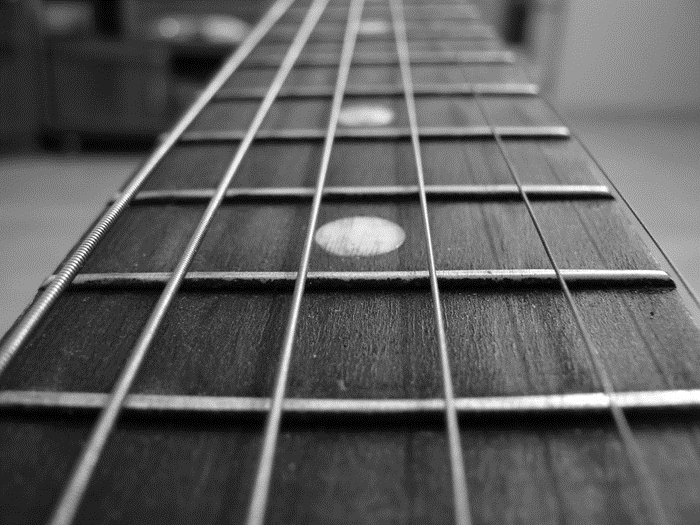
For a beginning guitarist, sooner or later there comes a time when you have to choose guitar strings. You are going to buy an extra set of strings for your guitar, or replace old or broken strings. Which strings to choose and how to understand the wide variety of models presented? We will help you figure it out. When choosing a guitar, you have already made a choice towards nylon or metal strings. Now let's take a closer look at these types of guitar strings. Perhaps someone wants to change one type of strings to another.
Types of guitar strings
Nowadays there are mainly two types of strings on sale: nylon and metal (made from different metal alloys).
Nylon strings Most often installed on classical guitars. They are also easier for beginners to learn because they are softer and untrained fingers do not experience pain when playing. The sound of nylon strings is soft, velvety, dull.
Metal strings on the contrary, they are ringing, bright and more expressive in sound. They are installed on the dreadnought type, and . But it is better for experienced guitarists to play them, since they are more difficult to clamp and for beginners, their first playing lessons will inevitably be accompanied by painful sensations in their fingers.
String thickness
The thickness of the strings is indicated on the packaging and is measured in thousandths of inches. The thinnest strings are 0.008 or 0.009 inches. The packaging usually says 010 or 10 - this means a thickness of 0.010 inches. They can also mark sets of strings according to their thin string. For example, 9, 10 or 11.
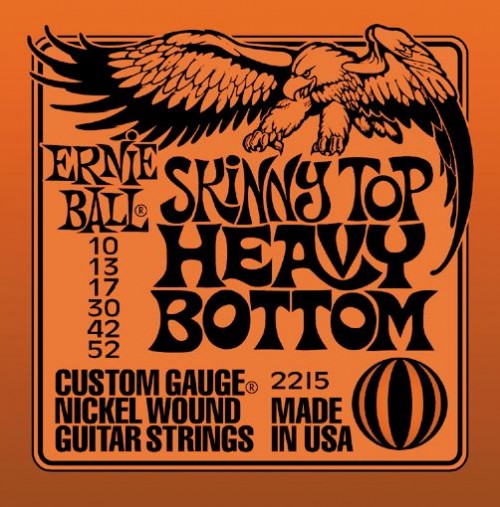
Ernie Ball Guitar Strings
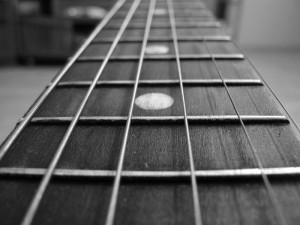
Guitar strings D "Addario
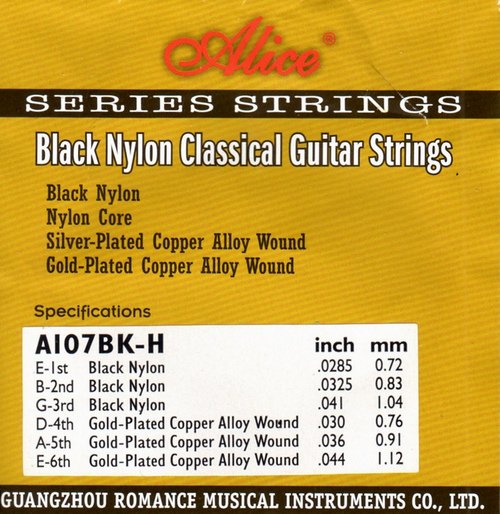
Alice Nylon Guitar Strings
Note that metal strings increase in thickness from string 1 to string 6, while nylon strings have three high strings that are almost identical to three low strings. The fact is that the first three strings are nylon fishing line, and the rest are made of nylon threads with windings made of various metal alloys, which we will discuss below.
Winding strings
There are three types of string winding: round, flat and semicircular. In the image you can see how they differ from each other physically.
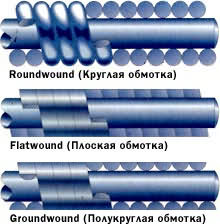
They differ in sound. The round winding gives a bright, ringing sound and has characteristic overtones when moving your fingers along the string (close to a whistling sound). The flat winding reduces the presence of parasitic overtones, but the sound itself becomes less sonorous. The semi-circular winding can be characterized as follows: the sound is close to the semi-circular winding, and the playing sensation is like that of “flat strings”.
Over the long period of its existence musical instruments have undergone significant changes. Technological progress and industrial development have opened new horizons for musical performers. This also affected the traditional guitar, which acquired its new look in acoustic and electric versions.
First strings
The very first strings were made from natural materials. As a rule, these were the veins or intestines of animals. The sound of such strings was distinguished by tenderness and melody, with a special intimacy. First it was a lyre, then a harp. In later times the guitar appeared. The sound quality of “natural” strings was pleasant to the ear, but natural material quickly deteriorated. The disadvantages of the first strings include:
- rapid wear;
- low sound;
- instability to moisture;
- instability to temperature changes.
The gut strings wore out especially quickly from frequent touching in the area of the frets. The material was worn out and constantly required replacement. The humidity of the musician's fingers also damaged the string.
New generation materials
In the age of industrial development, the world heard the new sound of a metal-based string. The piano won the hearts of music lovers with the power of sound in large halls. New string properties, high strength and durability have opened up wide possibilities in art. Very quickly, metal strings began to be installed on guitars. What is the classification of new age strings?
In the video, a specialist talks about the types of strings for guitars:
According to the type of material, strings can be divided into:
- synthetic;
- metal base.
By type of purpose - for:
- classical guitar;
- acoustic guitar;
- electric guitars.
Synthetic strings
 Synthetic strings are made from materials such as carbon or nylon. They are quite durable, have a melodious sound, and are inexpensive. Synthetics are installed on classical-type guitars. Nylon threads with copper winding go to the bass register.
Synthetic strings are made from materials such as carbon or nylon. They are quite durable, have a melodious sound, and are inexpensive. Synthetics are installed on classical-type guitars. Nylon threads with copper winding go to the bass register.
According to the tension force, nylon threads are divided into three types: medium, strong and very strong. For slow romantic music with a gentle sound, medium tension is suitable. But for a fast active composition, high or very high tension strings are needed. It is worth considering that the tension of the string negatively affects the comfort of playing: your fingers get tired and hurt.
Carbon material was invented in Japan. In terms of its performance characteristics, it is much stronger than nylon. These strings produce a rich, bright sound. Professional musicians and sophisticated music lovers will prefer carbon material over nylon. But for beginning musicians, nylon fits better: it is softer and more elastic, does not injure your fingers.
Metal based strings
- stainless steel;
- gold;
- alloy of steel and nickel;
- bronze;
- copper;
- coated with nano materials.
Metal produces a rich sound with a special sonority. Metal-based strings are used in open pop music concerts. The tension force of metal strings is much higher than nylon or carbon. This makes it possible to perform sparkling pop compositions and improvisations.
Strings made of noble steel (stainless steel) are characterized by high strength, corrosion resistance and excellent bright sound. They create vibrations mid frequency and are set to middle register. The disadvantage is rigidity. Steel requires trained fingers of the left hand.
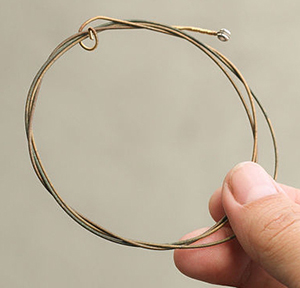 Gold gives a bright, clear sound. Of course, the cost of such material will be very high, but you will get a durable, high-quality string.
Gold gives a bright, clear sound. Of course, the cost of such material will be very high, but you will get a durable, high-quality string.
An alloy of nickel and steel is the most common material. Such threads have a bright, loud sound and are comfortable for the fingers. If you need an indoor version of the guitar, you can buy pure nickel strings: they have a more subdued chamber sound. Nickel provides great sound for blues and classic jazz compositions.
Bronze is used on acoustic guitars. This material gives a bright sound and has a special ringing temperament, but is not suitable for electric guitars. Bronze does not rust and is softer to the touch than steel. Phosphor bronze is of particular priority for acoustic instruments: it produces a more delicate sound and is convenient for playing with fingers. Phosphor bronze is brighter in color than usual and has a reddish tint.
Acoustic guitars also use copper, which produces a less bright sound. However, copper material is several times cheaper than bronze and silver.
Finally, threads newest generation with nano coating. In addition to strength, nano technology reduces “overtones” when pressing the string. The sound is almost perfect, without extraneous noise and unnecessary sounds of a non-musical nature.
What is winding
For the bass register, wound strings are used. What is it? The winding began to be used at the end of the 18th century in order to facilitate playing and enrich the sound of the lower register. The winding is made of different metal alloys and is divided into types:
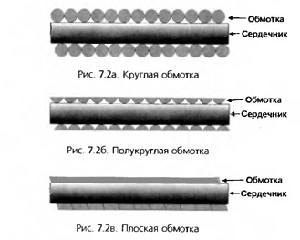
- round;
- semi-flat;
- flat.
If you want a subdued, chamber sound, choose flatwound strings. For a bright, intense sound, choose a round winding.
Metal alloys for winding
The most common winding is a copper alloy. This is an inexpensive material that provides velvety sound. However, the disadvantage of copper alloys is that the fingers become dirty: marks remain on them.
Silver is a little more expensive than copper, but more practical and convenient when playing. First of all, silver looks nice. Secondly, it does not change the sound of the string. Thirdly, it is many times more durable than copper.
The most expensive are threads with brass or phosphor bronze windings. But they are also the most durable.
What to choose for a beginner
When choosing a set of strings you need to consider:
- type of guitar;
- sound type;
- type of musical composition.
Tips for beginners on choosing a guitar and strings for the first game:
- For beginners to play classical guitar need to stock up nylon strings. Metal goes for acoustic guitars.
- The steel base gives a loud ringing sound. For beginners, “ten” is suitable.
Remember that no strings will help an incorrectly tuned instrument. To make your guitar sound, learn the basics of tuning the instrument.
